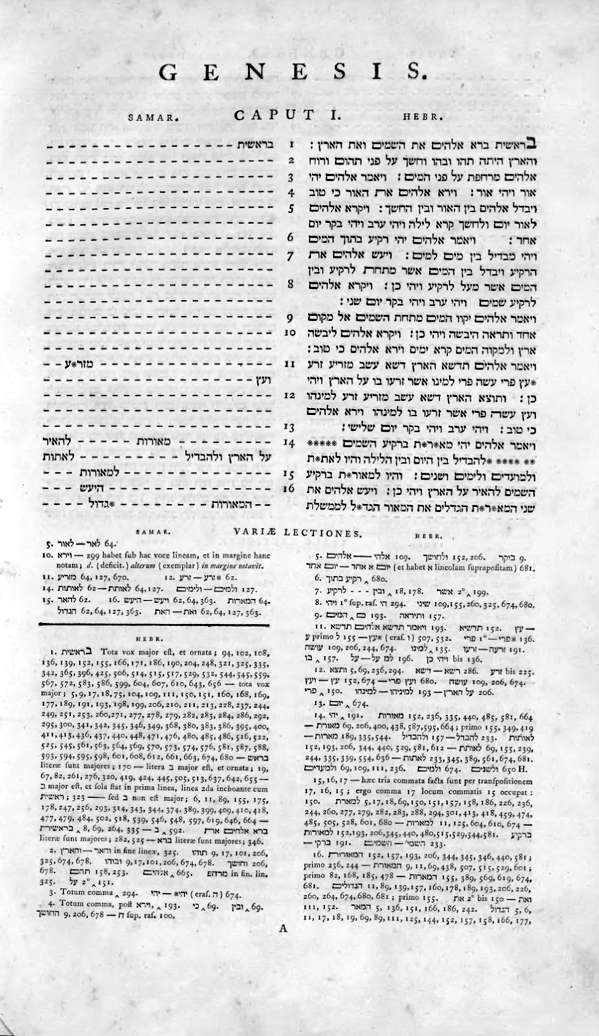
As you can see, the method was to print the Masoretic text on the right (the consonantal text came from the Van der Hooght edition), with the variations in the Samaritan Pentateuch noted on the left (of course the rest of the Bible has no Samaritan version, so the text is just the Masoretic ). Below are all the variations that could be found in the many manuscripts.
Van der Hooght Biblia Hebraica:
There were great defects in this work. Firstly, early on it was deemed to difficult (and not important enough) to collate the vowel points. What a missed opportunity. Secondly, Kennicott attached equal weight to all variations, including obvious scribal errors. However, this defect is also a good thing, because it helps illuminate the kinds of errors scribes might make, and is still a good record of these manuscript variations. Thirdly, it obviously was far from exhaustive. No manuscripts east of Vienna were consulted, and as we know from later centuries of research, treasures existed in Russia and the Crimea and elsewhere. It was a work of tedious labor. Apparently the method went something like this: Kennicott would sit with a manuscript or copy and an assistant would read aloud from a Van der Hooght Bible, letter by letter, and he would note the variations.
This work comes with a pre-subscriber list in the beginning, and I was interested and a little surprised to note so few Jewish names. This is especially interesting because the work was apparently not perceived as a potential attack on the integrity of the Bible, which Kennicott himself clearly had no intention of doing. In fact he received letters of introduction from the London Ashkenazim and Sephardim, signed by their Chief Rabbis, in the case of the Ashkenazim that would be Rabbi David Tevele Schiff, the Chasam Sofer's rebbe's rebbe. It is clear that they perceived this project as but an extension of the traditional Jewish work of experts who aimed at fixing and preserving the integrity of the text of Tanakh, this being the days before Discovery Seminars, Torah Codes and phony legends about the pristine state of the text of Tanakh. I don't have a copy of that letter, but below is the letter given to him by the Sephardim:

Paul Jakob Bruns, mentioned in the letter, was Kennicott's agent on the Continent, who actually ran around getting the manuscripts for him.
Ultimately a lot of people who had been eagerly anticipating his work were disappointed that it didn't turn up anything significant. Loads and loads and loads of variations, but it produced no radically new understanding of the Bible. Only a few years later this work would be eclipsed by Giovanni Bernardo de Rossi's own massive collation, to the tune of more than 1200 manuscripts. Incidentally, all five volumes of De Rossi's Variae lectiones Veteris Testamenti are on Google Books here. In truth, eventually Kennicott will turn up on Google as well, but JNUL beat them to the punch. However, it is now freely available to peruse at one's leisure. Enjoy!
See also here, here, here, and here for my prior Kennicott posts.
